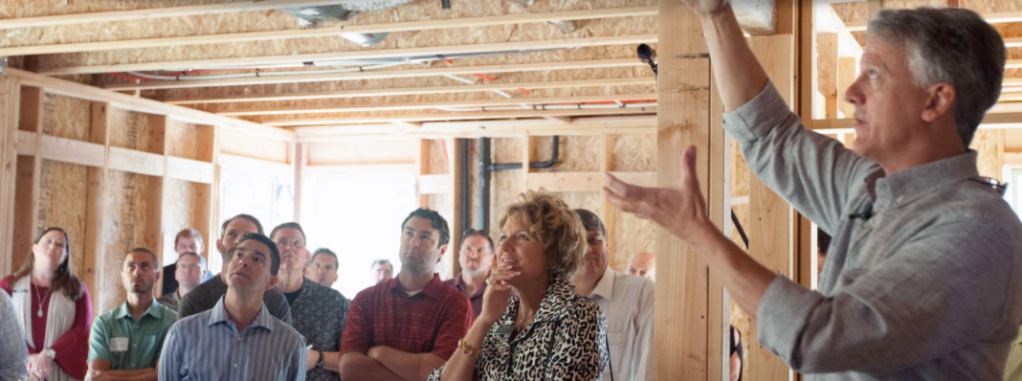Building housing takes labor. Labor demands pay. But pay might be sending the wrong message.
When contractors get paid for work being completed, the job is done. Or at least, it seems done to them. However, just completing a job doesn’t mean it was done right or done well. And that’s the rub. There are contractors out there who are not well trained, not well educated, and their only measure of success is a paycheck. Regardless of how well they perform, when they receive a check, the job feels done.
This circle is happening on so many construction sites across the country right now that it would be nearly impossible to disrupt. Yet in order to solve for the labor shortage in the housing community, it will be necessary.
Mark LaLiberte, principal partner at Construction Instruction, says there needs to be an education process that starts with the evolution of concept and process and ends with a quality job. Laborers need context and information about why they are doing their job to gain perspective and provide better work. During the past several years in Philadelphia, this lack of education issue had massive consequences. Poor construction resulted in issues that were affecting homeowners’ health and that would cost more than $100,000 per home to fix.
“It’s amazing to see how serious this is,” LaLiberte says. “Skilled labor isn’t about accomplishing the task. It’s about doing something correctly. But now we are just looking for someone with a pulse because there are no journeyman anymore.”
Technology can certainly play a role in putting the right content in front of the people on the job. Training can be online and easily converted into other languages.
LaLiberte questions who is going to move the housing industry forward because it’s so fragmented. It will take the entire industry collaborating to drive change. There is uncertainty and lack of ownership in how to produce results, and builders and developers struggle to make the investment in time and resources.
There are some builders that are finding a way to contribute because they realize that without trained labor, the industry won’t be able to advance. For instance, Shea Homes is developing an internal program with online learning.
Toll Brothers is creating consistency in details and using a visual programming language to facilitate better quality construction, says Jed Gibson, president of TollArchitecture, a Toll Brothers company. He is leading and currently testing a program at the company to make instructions easier to follow, with animations.
“We feel that paper 2-D details are antiquated,” Gibson says. “With all the technology available today we could be more clear. We are working on whether people will use instructions in a mobile environment and, if not, what other technology do they need?”
LaLiberte suggests that not only do builders need to contribute, but the industry needs to collaborate to enact legislation to allow new labor pools to enter from outside of the country. Historically, much of the labor force has been made up of immigrants. Currently, it’s a numbers game as there aren’t enough people to do the work, and the labor that wants to do the work is being held back.
Another solution, in order to drive higher quality construction, is that the industry could start paying more for work instead of focusing on building for the lowest cost per square foot. While increased pay would lead to better skill sets and higher demand for the jobs, this solution is not embraced by builders who are facing increased construction costs across the board.
Other new technologies are helping drive quality at lower costs as well. Prefabrication and systems like BMC’s Ready Frame system can help reduce the skill set required by today’s labor pool.
While all of these solutions will help create long-term success, solid training programs are a necessity. Poor quality construction can be worse on the industry than lack of labor.
This story appears as it was originally published on our sister site, www.hiveforhousing.com.



